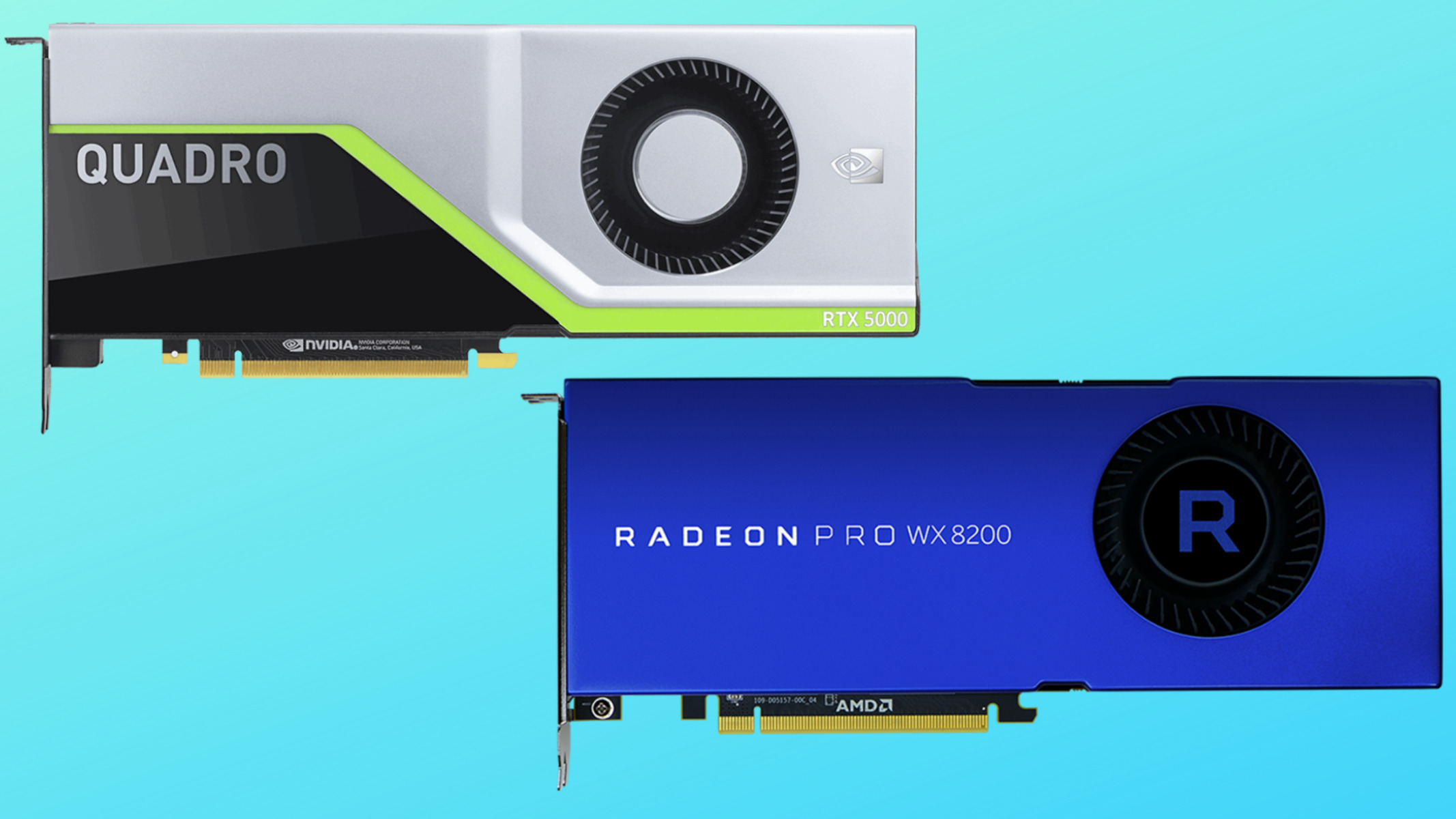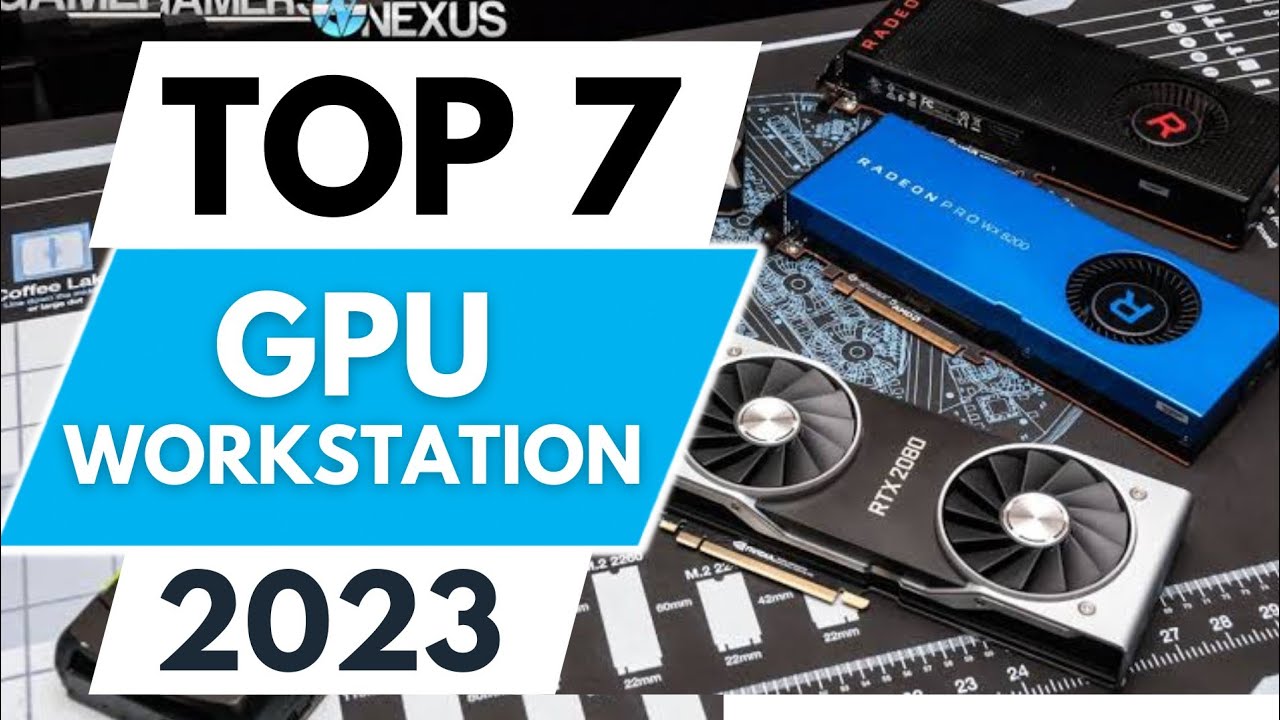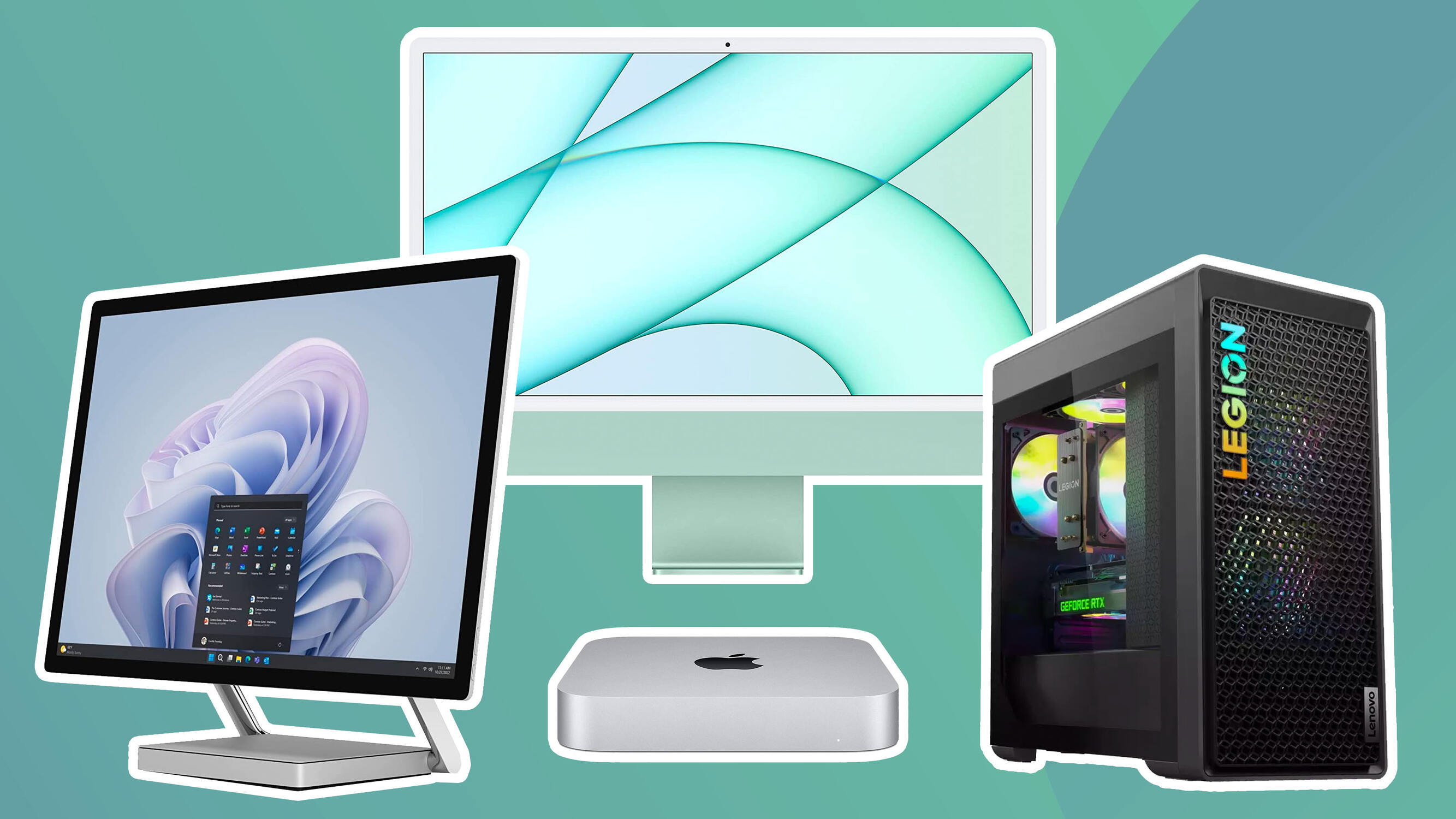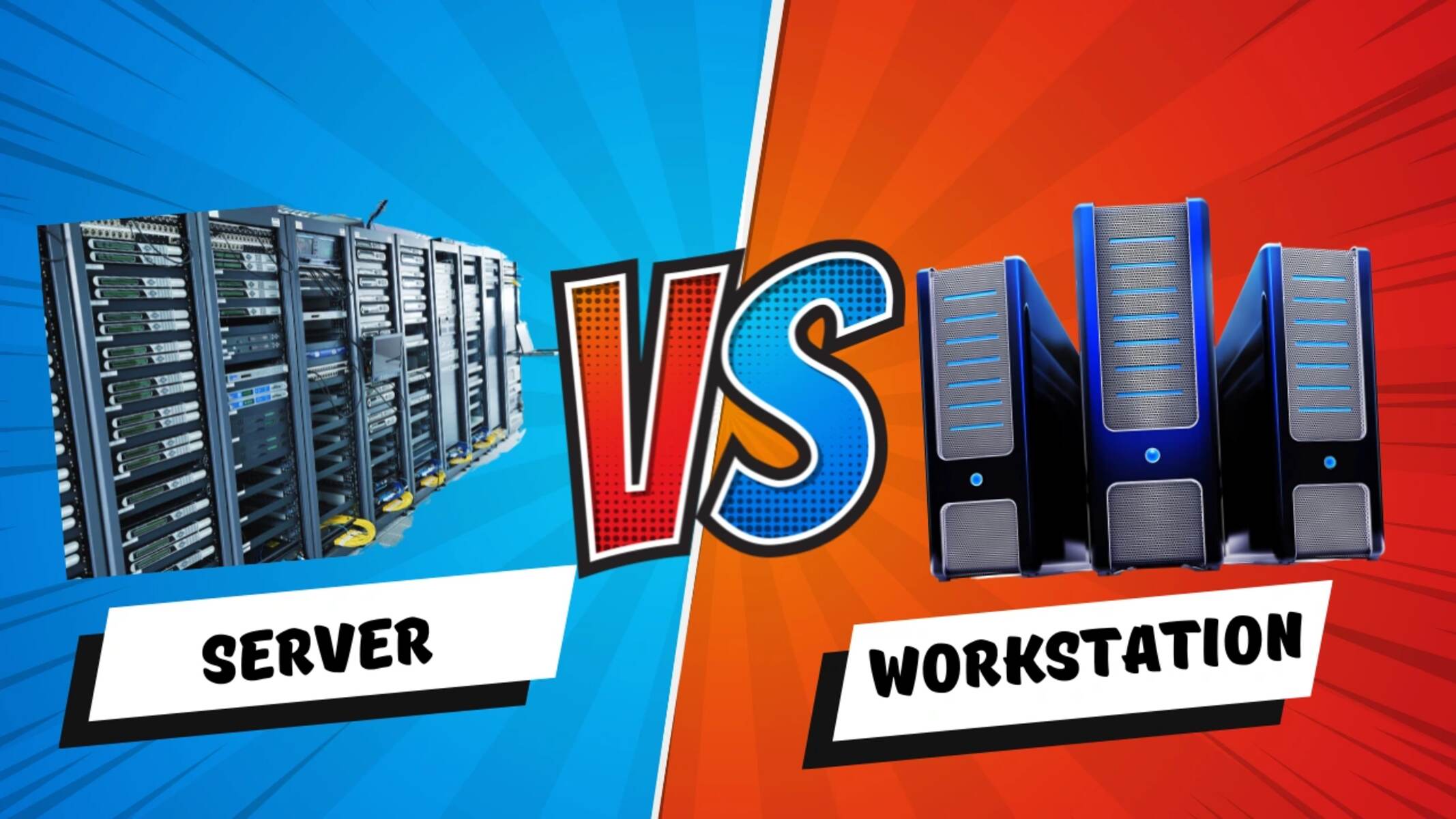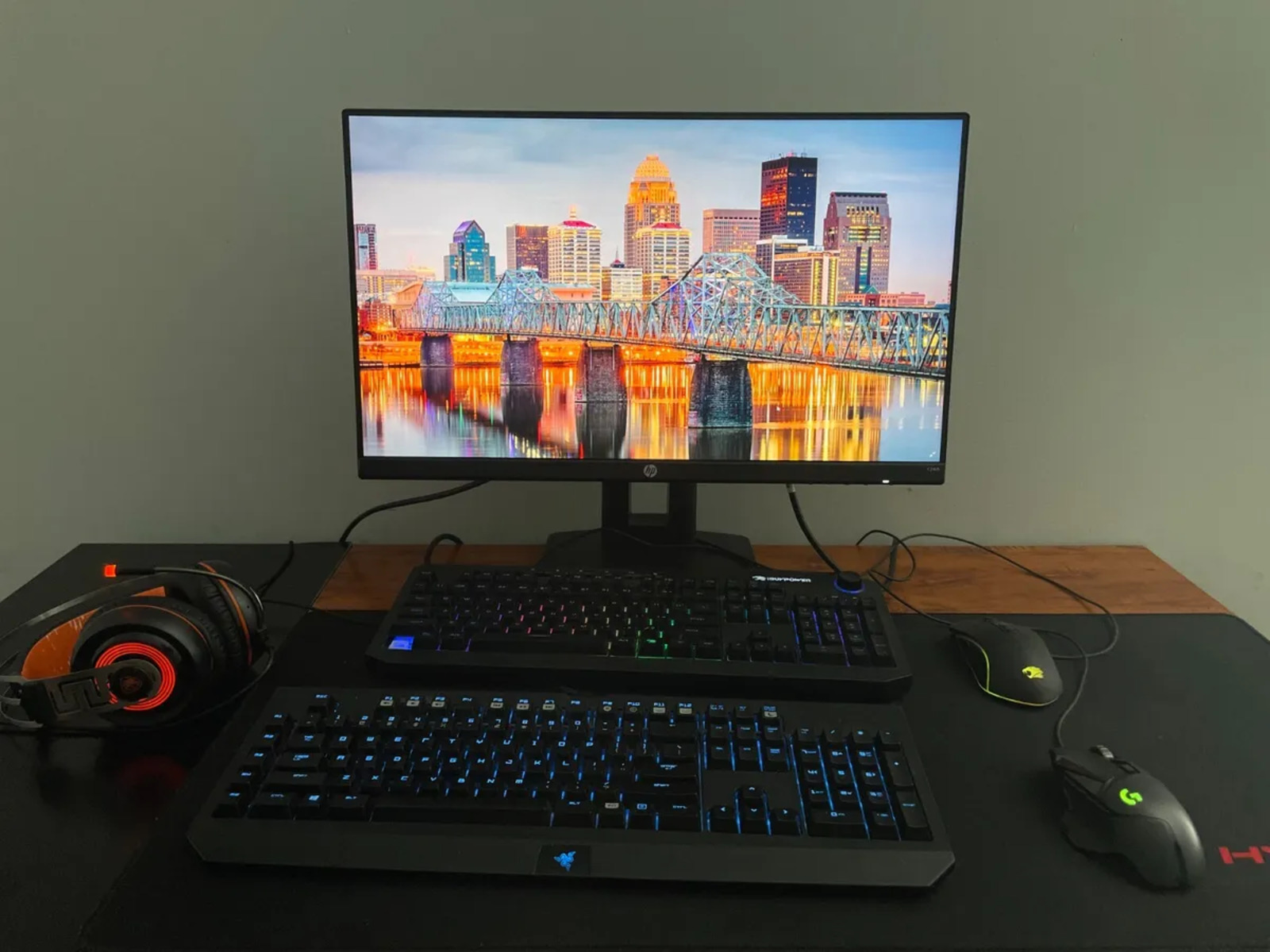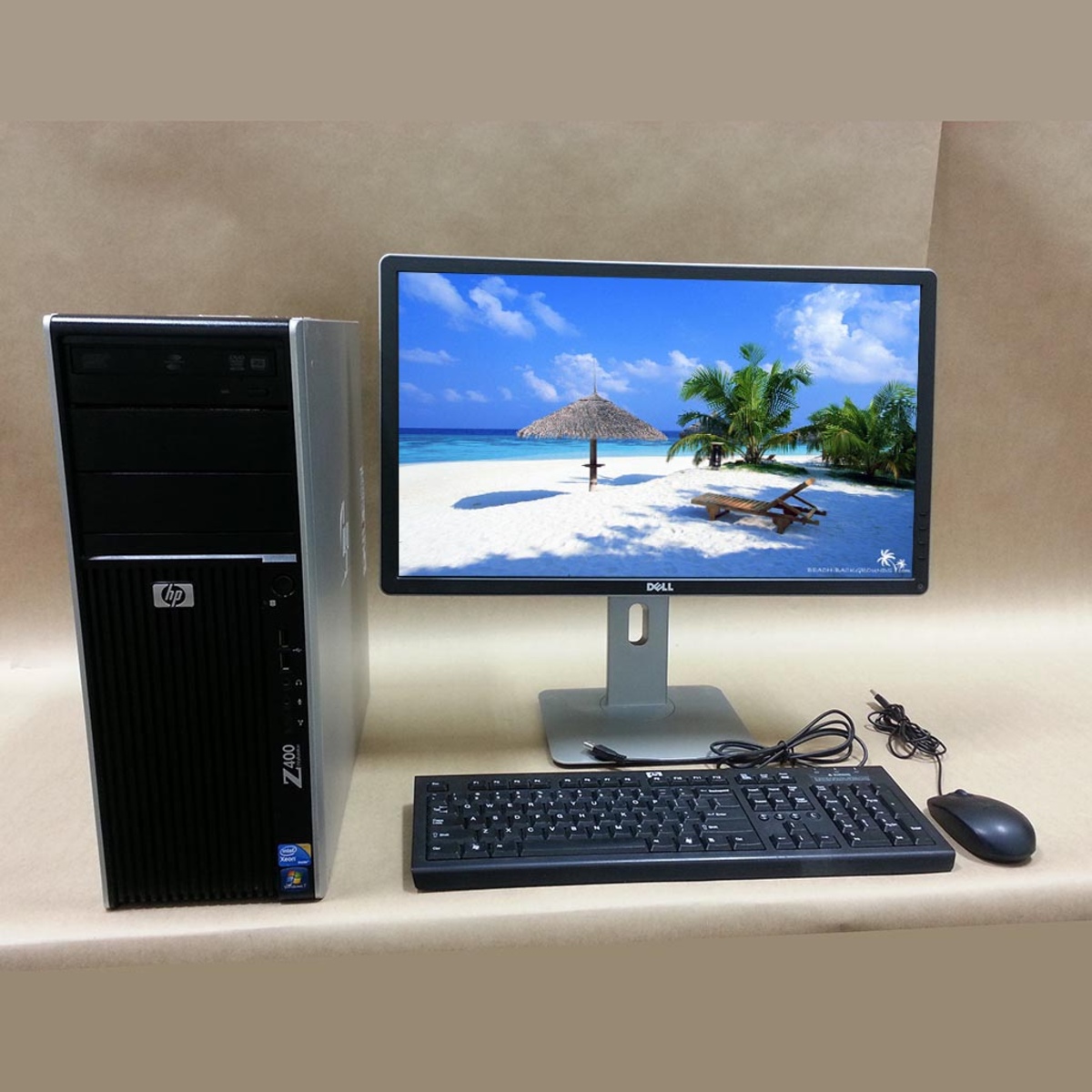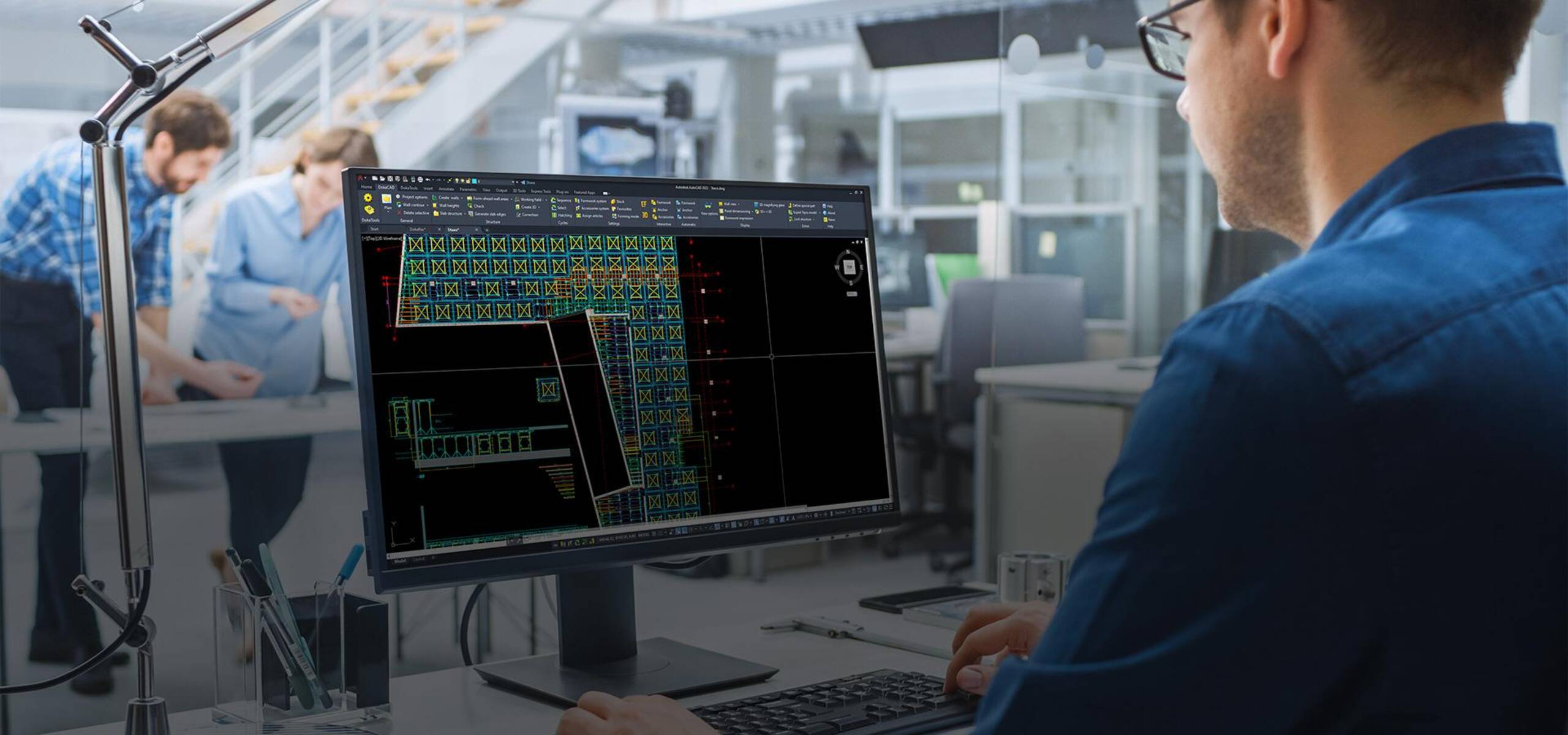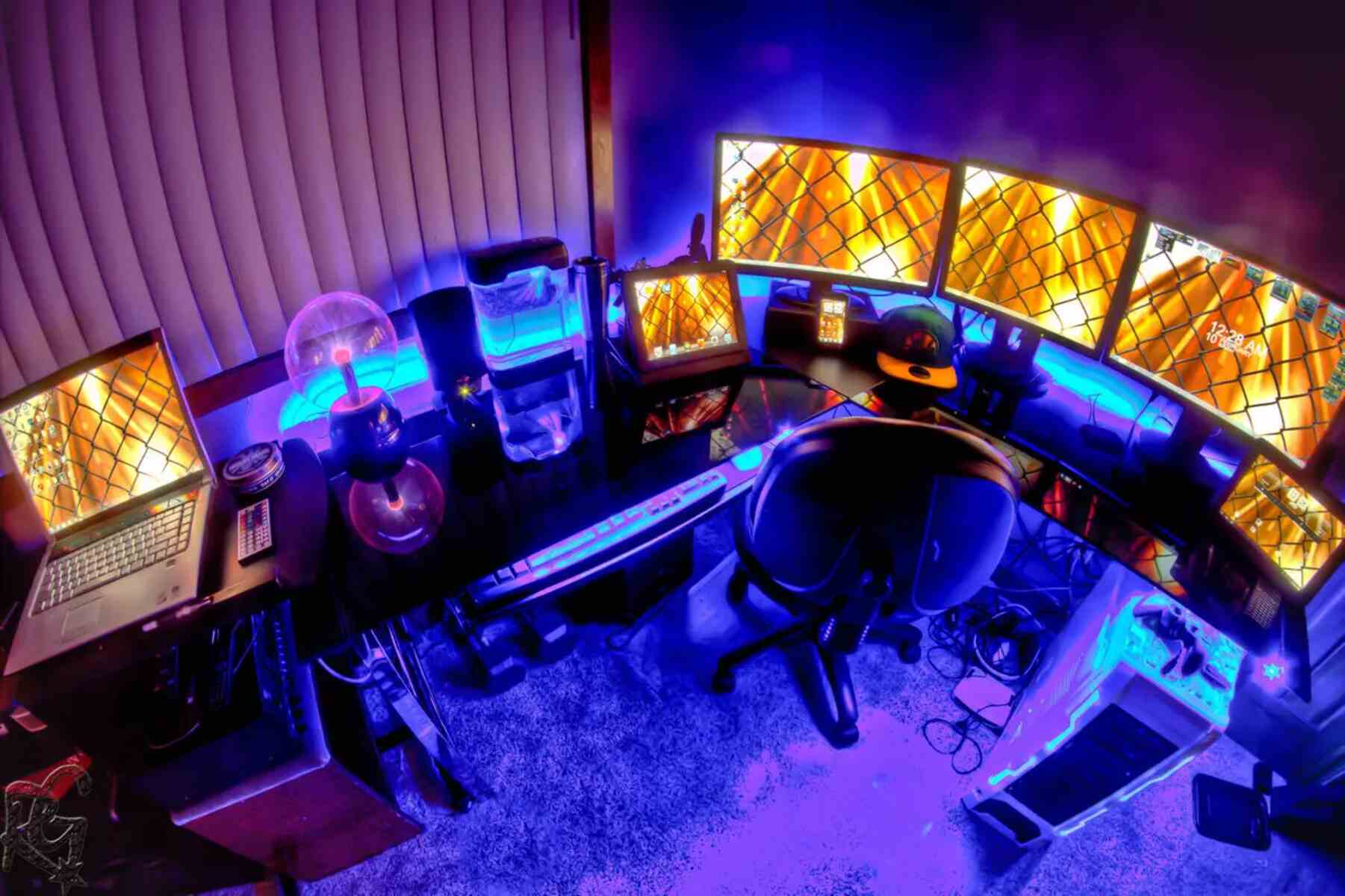Introduction
Workstation graphics cards play a crucial role in modern computing. These specialized hardware components are designed to handle professional graphics-intensive tasks, such as 3D modeling, animation, video editing, and CAD (Computer-Aided Design). Unlike gaming graphics cards, which prioritize high frame rates and visual effects, workstation graphics cards focus on accuracy, precision, and stability.
Whether you’re a graphic designer, architect, engineer, or content creator, having the right workstation graphics card can significantly impact your productivity and the quality of your work. In this article, we will delve into the world of workstation graphics cards, exploring their features, benefits, and how to choose the right one for your needs.
Workstation graphics cards are engineered to deliver superior performance and reliability for professional applications. These cards are optimized for tasks that require complex calculations and real-time rendering. They offer larger memory capacities, advanced cooling systems, and robust driver support, ensuring smooth and stable performance even when working with large datasets or intricate visual designs.
One of the main differences between workstation graphics cards and gaming graphics cards is the emphasis on precision and accuracy. While gaming graphics cards prioritize fast rendering and high frame rates, workstation cards prioritize the accuracy of colors, shading, and textures. This is critical when working on projects that require precise color representation, such as photo editing or visual effects production.
Another fundamental difference lies in the driver support and certification that workstation graphics cards offer. Manufacturers of workstation graphics cards work closely with software developers to ensure compatibility and stability with professional applications. These cards are thoroughly tested and certified by software vendors to guarantee optimal performance and functionality, providing peace of mind to professionals who rely on industry-standard software.
In the next sections, we will explore the specific benefits of owning a workstation graphics card, the leading brands in the market, how to choose the right card for your needs, and how to upgrade and troubleshoot your graphics card. So, let’s dive into the world of workstation graphics cards and unlock their potential!
What are Workstation Graphics Cards?
Workstation graphics cards, also known as professional graphics cards or workstation GPUs (Graphics Processing Units), are specialized hardware components designed to handle complex and demanding visual tasks. They are specifically optimized for professional applications that require high-performance graphics rendering, such as 3D modeling, CAD (Computer-Aided Design), animation, and video editing.
Unlike gaming graphics cards, which are primarily designed for delivering high frame rates and immersive visual effects in games, workstation graphics cards prioritize accuracy, precision, and stability. They ensure that professionals in fields such as architecture, engineering, graphic design, and content creation can create intricate and realistic visual representations without sacrificing performance or quality.
Workstation graphics cards excel at handling massive datasets, intricate visual designs, and real-time rendering. They typically offer larger memory capacities compared to gaming cards, allowing for the smooth manipulation of complex models and textures. The use of specialized drivers optimized for professional applications further enhances performance and stability, ensuring reliable operation even during demanding tasks.
One of the key features of workstation graphics cards is their ability to deliver precise and accurate colors. Professionals in fields like photography, design, and video production rely on accurate color representation to achieve their desired results. Workstation graphics cards are calibrated to provide consistent colors across different devices, allowing professionals to have confidence in their work and ensuring that the final output matches their creative intent.
Another important aspect of workstation graphics cards is their support for advanced rendering techniques, including ray tracing. Ray tracing simulates the behavior of light in a scene to create highly realistic and immersive visuals. With dedicated hardware acceleration for ray tracing, workstation graphics cards can significantly speed up rendering times and provide more lifelike lighting and reflections.
Furthermore, workstation graphics cards are rigorously tested and certified by software vendors to ensure compatibility and stability with professional applications. This certification process guarantees that the hardware and software work seamlessly together, reducing the likelihood of crashes, glitches, or errors during intensive workflows.
In summary, workstation graphics cards are powerful hardware components optimized for professional applications that require high-performance graphics rendering. They provide accuracy, precision, and stability, enabling professionals in various fields to create stunning visual designs, manipulate complex models, and produce lifelike animations and videos. In the next sections, we will explore the differences between workstation graphics cards and gaming graphics cards, as well as the benefits of using a workstation graphics card for your professional work.
Differences between Workstation Graphics Cards and Gaming Graphics Cards
Workstation graphics cards and gaming graphics cards may both fall under the category of GPUs (Graphics Processing Units), but they are designed with distinct purposes in mind. Understanding the differences between these two types of graphics cards is essential when choosing the right one for your specific needs.
One of the primary differences lies in the type of tasks they are optimized for. Gaming graphics cards are built to deliver immersive gaming experiences with high frame rates and realistic visual effects. They excel at handling real-time rendering of complex gaming environments, focusing on speed and fluidity to enhance the gaming experience.
On the other hand, workstation graphics cards are tailored for professional applications that require precision and accuracy, such as 3D modeling, CAD, animation, and video editing. They prioritize accuracy of colors, shading, and textures to ensure that professionals can create realistic and visually appealing content.
Another significant difference is the hardware configuration and memory capacity. Gaming graphics cards tend to have higher clock speeds and more CUDA cores, which are essential for delivering fast and responsive gaming performance. They also tend to have lower memory capacities since gaming environments generally require less memory to render.
In contrast, workstation graphics cards offer larger memory capacities to handle the complex datasets and models commonly encountered in professional applications. This allows professionals to work with high-resolution textures, intricate designs, and perform real-time rendering without experiencing performance bottlenecks.
Software compatibility and driver support are also distinguishing factors between workstation and gaming graphics cards. Workstation graphics card manufacturers work closely with software vendors to ensure compatibility and optimize performance for professional applications. These cards undergo extensive testing and certification to guarantee stability and compatibility with industry-standard software.
On the other hand, gaming graphics cards may have more frequent driver updates focused on improving gaming performance and enhancing compatibility with the latest games. However, they may not receive the same level of optimization and certification for professional applications.
In terms of pricing, workstation graphics cards generally tend to be more expensive than gaming graphics cards. This is due to the specialized features, superior build quality, and extensive driver support that workstation graphics cards offer. The investment in a workstation graphics card becomes a worthwhile decision for professionals who rely on their graphics card for their livelihood.
Overall, the differences between workstation graphics cards and gaming graphics cards lie in their optimization for different tasks, hardware configurations, memory capacities, software compatibility, and pricing. When selecting a graphics card, it is crucial to consider your specific requirements, such as the type of work you do and the professional applications you use, to ensure you choose the right card that can help you achieve optimal performance and quality.
Benefits of Workstation Graphics Cards
Workstation graphics cards offer a range of benefits that make them indispensable for professionals in fields such as 3D modeling, CAD, animation, and video editing. These specialized graphics cards provide the tools and performance necessary to achieve exceptional results. Let’s explore some of the key benefits of using workstation graphics cards:
1. Enhanced Performance: Workstation graphics cards are designed to handle highly demanding tasks that require real-time rendering, complex calculations, and handling large datasets. They offer powerful GPUs with higher memory capacities and specialized drivers that optimize performance for professional applications. This results in faster render times, smoother interactions, and improved overall workflow efficiency.
2. Precision and Accuracy: Professional applications often require precise color representation, accurate shading, and detailed textures. Workstation graphics cards are calibrated to deliver consistent and accurate colors, ensuring that designs, animations, and videos look exactly as intended. This level of precision is crucial for industries such as photography, design, and visual effects production.
3. Stability and Reliability: Workstation graphics cards undergo extensive testing and certification processes to ensure compatibility and stability with industry-standard software. They are designed to handle long hours of intense work without compromising performance or experiencing crashes. This reliability gives professionals peace of mind, knowing that their graphics card can handle the demands of their projects without disruptions.
4. Robust Software Support: Workstation graphics card manufacturers collaborate closely with software developers to optimize driver support for professional applications. This collaboration results in regular driver updates that enhance performance, fix bugs, and introduce new features specifically tailored for professional workflows. Having the latest driver updates ensures compatibility and access to the latest advancements in industry-specific software.
5. Multi-Monitor Support: Many professionals rely on multiple monitors to improve productivity and streamline their workflows. Workstation graphics cards typically offer support for multiple monitors, allowing professionals to work on different tasks simultaneously, compare designs side by side, or create immersive visual environments across multiple screens.
6. GPU Acceleration for Specialized Tasks: Workstation graphics cards provide dedicated hardware acceleration for specialized tasks, such as ray tracing and GPU compute. Ray tracing, for example, enables professionals to create realistic lighting and reflections, improving the overall visual quality of their work. Additionally, GPU compute capabilities speed up complex calculations and simulations, maximizing efficiency and productivity.
7. Longevity and Future-Proofing: Workstation graphics cards are known for their longevity and compatibility with future software advancements. They are built with high-quality components and designed to withstand intensive workloads over an extended period. This ensures that professionals can rely on their workstation graphics card for years to come, minimizing the need for frequent upgrades.
In summary, workstation graphics cards offer enhanced performance, precision, stability, and robust software support. They are designed to handle the demanding tasks of professional applications, providing the necessary tools and reliability to achieve exceptional results. Investing in a workstation graphics card can significantly improve workflow efficiency, productivity, and the overall quality of your work.
Common Workstation Graphics Card Brands
When it comes to choosing a workstation graphics card, there are several reputable brands in the market that offer high-quality and reliable options. These brands have a long-standing presence in the industry and are known for their commitment to innovation, performance, and customer satisfaction. Let’s take a look at some of the common workstation graphics card brands:
1. NVIDIA: NVIDIA is one of the leading names in the graphics card industry, offering a wide range of workstation GPUs under their Quadro series. Their workstation graphics cards are known for their high performance, exceptional stability, and extensive software support. NVIDIA continues to push the boundaries of graphics technology with features like real-time ray tracing and AI-powered rendering.
2. AMD: AMD is another prominent player in the workstation graphics card market, with their Radeon Pro series. AMD graphics cards are highly regarded for their excellent price-to-performance ratio and robust performance in professional applications. They offer advanced features like virtual reality (VR) support and are often positioned as a cost-effective alternative to competing brands.
3. Intel: While Intel is primarily known for its processors, they have also entered the workstation graphics card market with their Intel Xe architecture. Although they are relatively new to the dedicated graphics card space, Intel’s Xe graphics cards show promise in terms of performance and efficiency. They are particularly focused on AI acceleration and integrating graphics capabilities into their processors.
4. AMD Radeon Pro: In addition to their consumer-oriented Radeon graphics cards, AMD also offers a lineup of workstation graphics cards under the Radeon Pro series. These cards are optimized for professional use, offering features like powerful GPU compute capabilities and extensive workstation application certification. They also provide support for high-resolution displays and multi-monitor setups.
5. PNY Technologies: PNY Technologies is a well-known manufacturer of graphics cards, including their NVIDIA Quadro series workstation GPUs. They offer a wide range of workstation graphics cards, catering to different performance needs and budgets. PNY graphics cards are highly regarded for their reliability, stability, and quality build, making them a popular choice among professionals in various industries.
6. ASUS: ASUS is a renowned brand known for its high-performance computing hardware, including workstation graphics cards. Their workstation graphics cards, marketed under the ASUS ProArt series, cater to professionals who require top-notch performance and reliability. ASUS graphics cards often feature specialized cooling solutions, robust power delivery, and software enhancements for enhanced productivity.
7. HP: HP is a trusted name in the workstation industry, offering a range of high-quality workstation hardware, including graphics cards. Their workstation graphics cards are designed to provide stability and performance in demanding environments. HP ensures that their graphics cards undergo thorough testing and certification to ensure compatibility with their workstations and popular professional applications.
In summary, there are several reliable and reputable brands in the market that offer workstation graphics cards. NVIDIA, AMD, Intel, and PNY Technologies are among the prominent players, each with their own strengths and product offerings. ASUS and HP are also notable brands known for delivering robust and reliable graphics cards specifically tailored for professional use. When selecting a workstation graphics card, it’s important to consider factors such as performance requirements, software compatibility, and budget to choose the brand and model that best suits your specific needs.
How to Choose the Right Workstation Graphics Card
Choosing the right workstation graphics card is crucial to ensure optimal performance and productivity in your professional workflow. To make an informed decision, consider the following factors:
1. Performance Requirements: Identify the specific tasks and applications you will be using the workstation graphics card for. Determine the level of performance you need, such as the complexity of models, the resolution of visuals, and any real-time rendering requirements. This will help you determine the minimum specifications and performance capabilities you should look for in a graphics card.
2. Compatibility and Certification: Ensure that the workstation graphics card you choose is certified by the software vendors of the applications you use. Graphics cards that have been certified are more likely to have optimized drivers and better compatibility, leading to improved stability and performance. Check the websites of the software vendors or the workstation graphics card manufacturer for information on certified configurations.
3. Memory Capacity and Bandwidth: Consider the memory capacity and bandwidth of the graphics card. Larger memory capacities are important for handling complex models, high-resolution textures, and real-time rendering. Higher memory bandwidth allows for faster data transfer, which can greatly improve performance in memory-intensive tasks.
4. Software Support and Updates: Evaluate the level of software support and frequent driver updates provided by the graphics card manufacturer. Regular driver updates can bring performance improvements and bug fixes, ensuring compatibility with the latest professional applications and operating systems. Look for a manufacturer with a track record of providing timely and reliable software support.
5. Budget: Determine your budget for the workstation graphics card. Workstation graphics cards tend to have higher price points compared to consumer-grade cards due to their specialized features and optimization. Consider the value and performance benefits that the graphics card offers relative to its cost. It’s important to strike a balance between performance and your budget constraints.
6. Power Requirements: Ensure that your workstation’s power supply is capable of supplying enough power to the graphics card. Workstation graphics cards often have higher power requirements compared to consumer-grade cards, so it’s essential to check the specifications and ensure compatibility with your existing system.
7. Connectivity and Display Support: Consider the connectivity options and display support of the graphics card. It’s important to ensure that the graphics card has the necessary ports that match your monitor setup. If you require multiple monitors or specific display technologies, verify that the graphics card supports them.
8. Reviews and User Feedback: Research online reviews and user feedback for the graphics card models you are considering. Real-world experiences can provide insights into the performance, reliability, and overall user satisfaction of the graphics card. Pay attention to both professional reviews and user reviews to get a balanced perspective.
By considering these factors, you can make an informed decision when choosing the right workstation graphics card for your needs. Remember to prioritize your specific requirements and strike a balance between performance, compatibility, budget, and future-proofing to maximize your investment.
Upgrading Your Workstation Graphics Card
Upgrading your workstation graphics card can significantly enhance the performance and capabilities of your system, allowing you to tackle more demanding tasks and achieve better results. Here are some key considerations when upgrading your workstation graphics card:
1. Compatibility: Before purchasing a new graphics card, ensure that it is compatible with your workstation’s hardware and power supply. Check the specifications of the graphics card and compare them with your system’s requirements, including the available PCIe slots, power connectors, and power supply wattage.
2. Performance Gain: Determine the performance gains you expect to achieve with the new graphics card. Consider the specific tasks and applications you use and how the upgraded graphics card will improve the performance and capabilities of those workflows. Look for benchmarks or performance comparisons of the graphics card models you are considering to get a realistic expectation of the performance boost.
3. Budget: Establish a budget for your graphics card upgrade. Determine how much you are willing to spend and look for graphics card options that provide the best performance within your budget range. Compare prices from different manufacturers and retailers to find the best deal.
4. Future-Proofing: Consider the future requirements of your work and the industry. While it is impossible to future-proof completely, selecting a graphics card with a higher performance ceiling and more advanced features can help extend its relevance and usability for a longer period. This can save you from needing to upgrade again in the near future.
5. Software Support: Research the level of software support provided by the graphics card manufacturer. Regular driver updates and compatibility with industry-standard software are essential for optimal performance and stability. Ensure that the manufacturer has a good track record of consistently providing reliable and timely driver updates.
6. Installation Process: Familiarize yourself with the installation process of the graphics card. Ensure that you have the necessary tools and follow the manufacturer’s instructions carefully to avoid any damage to your system or components. If you are not comfortable with the installation process, consider seeking professional assistance to ensure a smooth and successful upgrade.
7. Sell or Recycle the Old Graphics Card: Once you have successfully upgraded your graphics card, consider selling or recycling your old graphics card. There are various online platforms and technology recycling centers where you can sell or dispose of your old graphics card responsibly.
8. Test and Optimize: After installing the new graphics card, thoroughly test it in your professional applications to ensure that it is functioning correctly. Optimize the graphics card settings within the applications to take full advantage of its capabilities and maximize performance. Monitor system temperatures and ensure that the new graphics card is adequately cooled to prevent overheating.
By considering these factors and following the necessary steps, you can successfully upgrade your workstation graphics card, improving performance, and unlocking new possibilities for your professional work.
Maintaining and Troubleshooting Workstation Graphics Cards
Maintaining and troubleshooting your workstation graphics card is crucial for optimal performance and longevity. By taking proactive measures and knowing how to address common issues, you can ensure that your graphics card continues to operate at its best. Here are some important tips for maintaining and troubleshooting your workstation graphics card:
1. Keep the GPU Tepmerature in Check: Overheating is one of the most common issues with graphics cards. Make sure that your computer’s airflow is adequate, and clean out any dust or debris that may be blocking the cooling fans or heatsink. Consider installing additional case fans or using aftermarket cooling solutions to improve airflow and reduce temperatures.
2. Update Graphics Card Drivers: Regularly update your graphics card drivers to benefit from the latest bug fixes, performance improvements, and software compatibility. Visit the manufacturer’s website or use their recommended software to check for driver updates. Ensure that you properly uninstall the existing drivers before installing the updated ones.
3. Monitor and Manage Power Supply: Ensure that your power supply unit (PSU) meets the power requirements of your graphics card. Inadequate power delivery can cause instability and performance issues. Use reputable power supply calculators to determine your system’s power requirements, and consider upgrading your PSU if necessary.
4. Check for Firmware Updates: Some graphics cards have firmware that can be updated to improve compatibility, stability, and even performance. Check the manufacturer’s website or utility software for any available firmware updates for your graphics card and follow the instructions to apply them.
5. Monitor System Temperatures: Install monitoring software to keep an eye on your system’s temperatures, including the GPU. High temperatures can lead to performance throttling, crashes, and even damage to the graphics card. Adjust fan curves or use custom cooling solutions if necessary to maintain safe operating temperatures.
6. Resolve Driver Conflicts: In case you experience graphical glitches, crashes, or system instability, it is essential to investigate whether driver conflicts may be the cause. Use tools like Display Driver Uninstaller (DDU) to completely uninstall the existing drivers and perform a clean installation of the latest graphics card drivers.
7. Check for Loose Connections: Ensure that the graphics card is securely seated in the PCIe slot. Sometimes, a loose connection can cause display issues or system errors. Remove the graphics card, clean the contacts, and reseat it firmly. Additionally, check the power connectors and cables to ensure they are properly connected.
8. Troubleshooting with Support Documentation: Refer to the manufacturer’s support documentation and user forums if you encounter issues with your graphics card. Many common problems have well-documented solutions and can easily be resolved by following the recommended troubleshooting steps provided by the manufacturer or community.
By following these maintenance and troubleshooting tips, you can keep your workstation graphics card running smoothly and address common issues effectively. Regularly monitor temperatures, keep drivers up to date, and promptly address any hardware or software conflicts that may arise. Proper maintenance and troubleshooting will help optimize the performance and longevity of your workstation graphics card.
Conclusion
Workstation graphics cards are essential tools for professionals in fields such as 3D modeling, CAD, animation, and video editing. With their specialized features, optimized performance, and stability, these graphics cards enable professionals to achieve accurate and visually stunning results in their work.
We explored the key aspects of workstation graphics cards, including their differences from gaming graphics cards, benefits, and considerations for choosing the right one. NVIDIA, AMD, Intel, PNY Technologies, ASUS, and HP are some of the prominent brands that offer reliable and high-performance workstation graphics cards.
We also discussed the importance of maintaining and troubleshooting workstation graphics cards to ensure optimal performance and longevity. By keeping the GPU temperature in check, updating drivers, managing power supply, and addressing common issues, professionals can maximize the capabilities and lifespan of their graphics cards.
Whether you’re a professional architect designing intricate 3D models or a video editor working on high-resolution footage, selecting the right workstation graphics card can significantly enhance your productivity and the quality of your work. Consider your specific requirements, budget, and software compatibility when choosing a graphics card, and make use of maintenance and troubleshooting tips to keep it running smoothly.
In conclusion, workstation graphics cards are indispensable tools for professionals in graphics-intensive industries. They provide the performance, accuracy, stability, and compatibility required for complex visual tasks. By understanding their benefits, choosing the right card, and properly maintaining it, professionals can unlock their creative potential and achieve remarkable results in their professional work.







